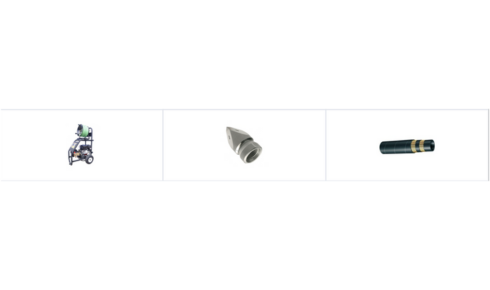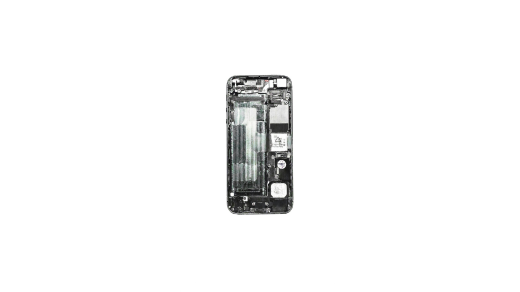The Internet of Things (IoT) is defined as a network of physical objects or devices, including sensors, appliances, vehicles, or wearables, embedded with sensors, software, and other technologies. Such devices connect to the internet and collect, exchange, and analyze data without human intervention, thus making operations smarter and automated in different industries and daily life.
IoT devices function by collecting data through embedded sensors and then transmitting the data over the internet to a central server, cloud, or other devices for processing and analysis. The processed data can be used to take decisions, alert, or trigger actions automatically. A smart thermostat will collect data regarding room temperature and adjust the thermostat settings to create a comfortable environment.
Some common examples of IoT devices are:
Smart Home Devices: thermostats, lights, locks, and security cameras like Nest, Ring, and Philips Hue
Wearables: smartwatches, fitness trackers such as Apple Watch and Fitbit
Connected Appliances: refrigerators, washing machines, and coffee makers
Smart Health Devices: heart rate monitors, glucose sensors, and smart scales.
Industrial Internet of Things Devices: Sensors on machinery for predictive maintenance, smart meters on utilities, and connected equipment on factory floors.
How secure is an IoT? Security is a fundamental concern with these devices since some of them hold sensitive personal information or operational details and are accessed through networks. Most devices come with vulnerabilities particularly the cheaper brands, which tend to be hackers’ paradise while improvements are now being made that include encryption in some cases along with secure updating of firmware to better authentication modes. Users must first take precautions where they can either change default settings or access in secure networks.
How do IoT devices communicate with each other? IoT devices communicate using various protocols, including:
Wi-Fi: Common for home IoT devices that need internet connectivity.
Bluetooth and Bluetooth Low Energy (BLE): Ideal for short-range communication, such as between smartphones and smart home devices.
Zigbee and Z-Wave: Low-power, low-range wireless communication protocols commonly used in home automation.
LoRaWAN: Long-range, low-power wide-area network protocol used for outdoor and industrial IoT devices.
5G and LTE: High-speed mobile communication networks appropriate for real-time IoT data transmission in urban or industrial settings.
What are the advantages of IoT devices? Some key advantages of IoT devices include:
Automation: Devices can automatically carry out tasks based on data they collect, like adjusting room temperature or locking doors when you leave home.
Convenience: IoT devices make everyday activities more efficient, providing ease of use and hands-free operation.
Efficiency: Data from IoT devices can help optimize resource usage, such as energy or water, reducing waste and operational costs.
Remote Monitoring: IoT allows users to monitor and control devices remotely, which is useful for everything from home security to industrial equipment monitoring.
Personalization: IoT devices can adapt to user preferences and behavior patterns, providing customized experiences (e.g., personalized recommendations in smart home setups).
These are some of the possible risks of IoT devices:
With such immense benefits brought by IoT, there are also kinds of risks. Such risks include:
Privacy Concerns: IoT devices collect immense amounts of personal data, like health metrics or daily habits, which can be breached.
Cybersecurity: As there is interconnectivity among these devices, vulnerability in one device could expose an entire network to cyberattacks.
Data Overload: IoT produces vast amounts of data, and handling and processing it is a problem, especially in real-time.
Compatibility Issues: Many IoT devices are built on different standards, which can pose a challenge in interoperability.
How is data from IoT devices processed and analyzed? Data from IoT devices is generally processed in the following ways:
Edge Computing: Some amount of processing happens on the device or local gateway (“edge”), enabling faster responses without dependence on the central servers as much.
Cloud Computing: Data are sent to the cloud for storage, processing, and analysis. It enables more complex computations and availability of large amounts of data from which insights would come.
Real-Time Processing: At times, the data is processed in real time, such as when smart cars make decisions based on traffic data gathered by sensors in real time.
What are the challenges of large-scale deployment of IoT devices? Large-scale deployment of IoT devices poses several challenges:
Integration with Legacy Systems: IoT devices must often work in conjunction with legacy systems or other IoT devices and therefore require compatibility and seamless integration.
Data Management: Growing numbers of devices make it ever more complex in terms of storing and managing this enormous amount of data.
Consumption of power: Devices having to run permanently require power consumption, and most importantly, hard-to-reach places can be extremely challenging in respect of battery lifetime management.
Networking Infrastructure: Assuring a constant and fast form of communication may be difficult amongst thousands of them, especially over remote areas.
How do IoT devices affect energy consumption? IoT devices can both increase and decrease energy consumption depending on their use:
Energy Efficiency: IoT devices such as smart thermostats, lighting, and appliances can help reduce energy consumption by optimizing their use based on real-time data.
Increased Energy Consumption: More devices connected to the network can increase overall energy consumption, especially when they rely on constant data transmission or use power-hungry communication protocols.
Energy Monitoring: IoT-enabled energy meters allow users and businesses to track and manage energy consumption, further optimizing usage.
Can IoT devices be used for environmental monitoring? Yes, IoT devices are increasingly used for environmental monitoring. For example:
Smart Sensors: Devices measure air quality, temperature, humidity, and other environmental factors in real-time.
Smart Agriculture: IoT sensors assist farmers in monitoring soil moisture, temperature, and weather conditions to increase crop yield and sustainability.
Wildlife Monitoring: IoT devices track wildlife populations, detect pollution, and monitor ecosystems to understand the environment better.
The role of AI in IoT devices is the integration of AI and machine learning into IoT devices to make them intelligent. AI allows IoT devices to do the following:
Predictive Maintenance: Devices can analyze data from machines to predict failures and schedule maintenance before issues arise.
Enhanced Automation: AI-powered IoT systems can learn from past actions and optimize their operations, creating smarter environments.
Data Insights: AI algorithms can process huge volumes of data generated by IoT devices, allowing actionable insights to businesses and people.
Are IoT devices user-friendly? Most of the IoT devices are built keeping user-friendliness in mind. In case of consumer-based devices, there are a large number of products available:
Smart Home Devices: Most come with a simple mobile application or voice assistant integration, like Amazon Alexa and Google Assistant.
Wearables: The wearables are also smartwatches and fitness trackers with user-friendly interfaces for health data tracking. Industrial IoT systems are more complex, requiring expertise in installation, configuration, and management.
What’s the future of IoT devices? The future of IoT seems promising with a few key trends:
5G Connectivity: With 5G, there will be faster and more reliable connectivity. This means more IoT devices will be able to operate in real-time, allowing for large-scale deployments.
Edge Computing: The need for edge computing will arise due to more devices collecting data and the requirement of real-time processing and reducing latency.
Smart Cities: IoT will form the core of smart cities in terms of traffic management, energy optimization, and improvement of public services.
Health Monitoring: This could involve more comprehensive integration of IoT with the healthcare industry. This will provide continuous monitoring of health, remote diagnostics, and personalized care to every individual.
How Do I Secure My IoT Devices from Cyber Attacks? Security Best Practices for Your IoT Devices
Change Default Passwords: Always change the default passwords on IoT devices to strong, unique passwords.
Update Firmware: Update your device firmware regularly to patch known security vulnerabilities.
Use a Secure Network: All IoT devices must connect to a secure Wi-Fi network, using a strong encryption version of WPA (e.g., WPA3).
Turn On Two-Factor Authentication: Turn on two-factor authentication (2FA) where available
Segregate Networks: All IoT devices are separated from your core systems and, in many organizations, put onto a guest network that is least exposed in the event of an incident.
End
IoT devices are bringing about a radical change in how we live, work, and relate to the environment. On the one hand, they offer countless benefits, including convenience and efficiency improvements. On the other hand, they raise a number of problems related to security, privacy, and scalability. Users and organizations can maximize their potential only when they know exactly how these devices work and what proactive steps must be taken for their security.




